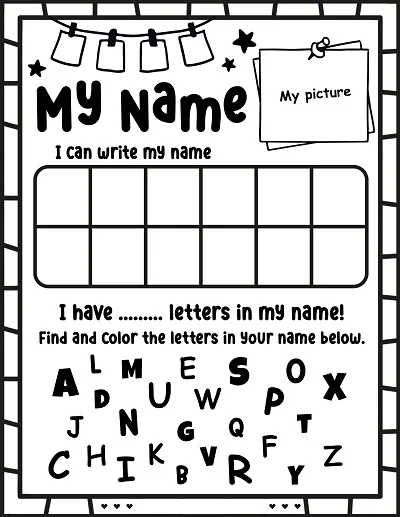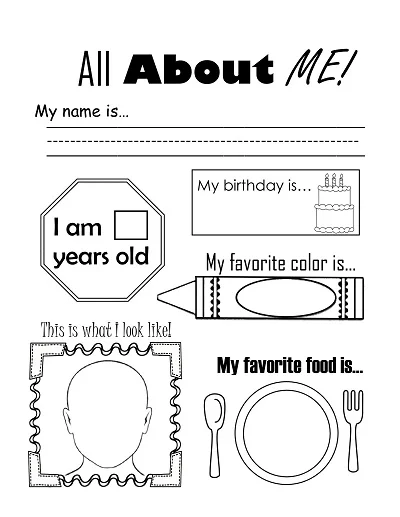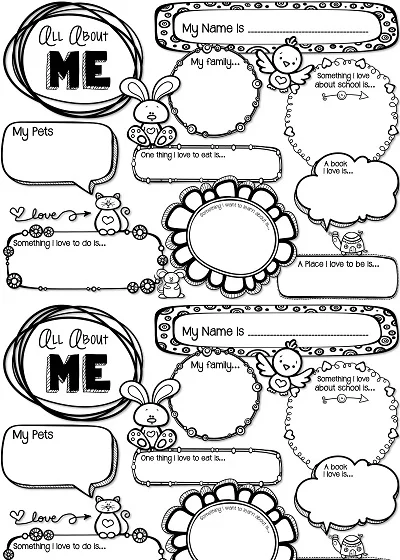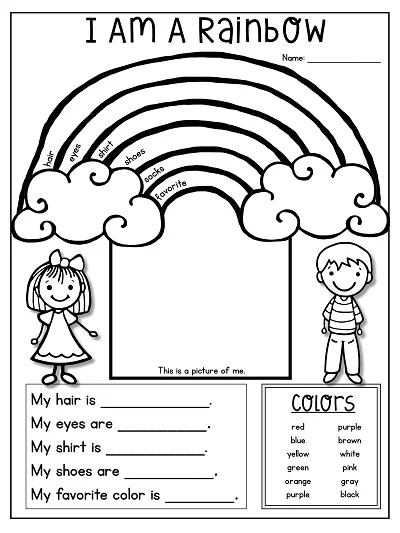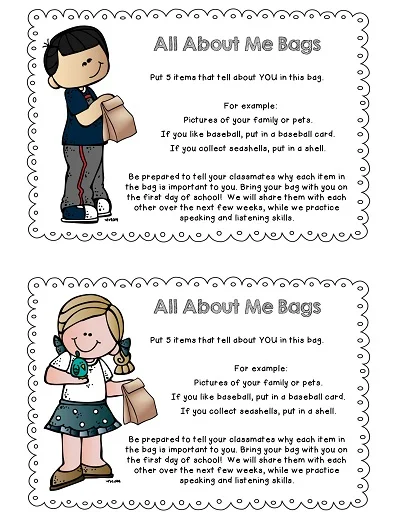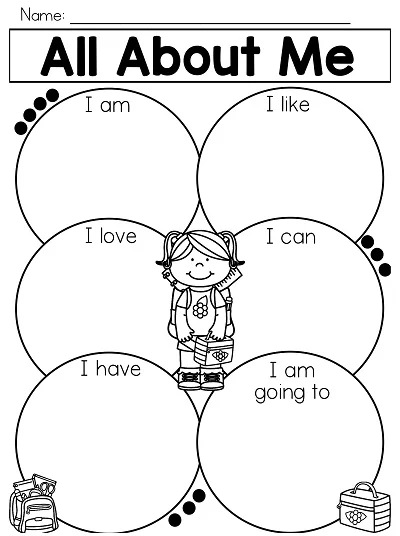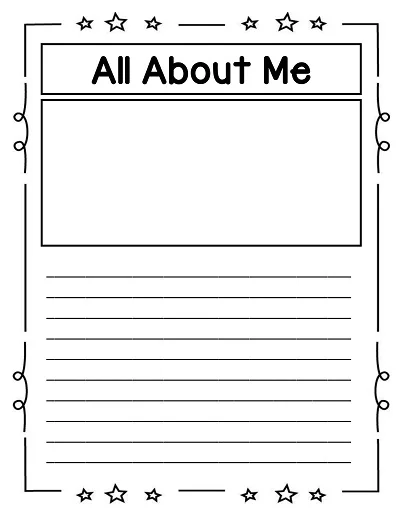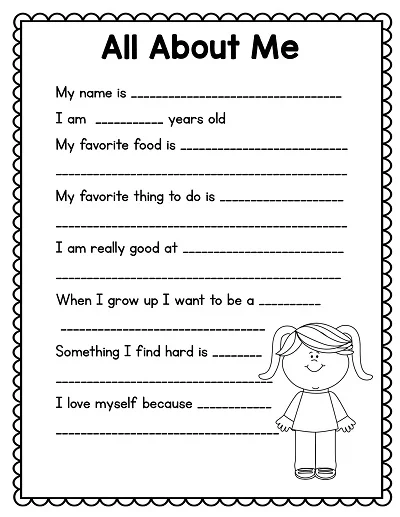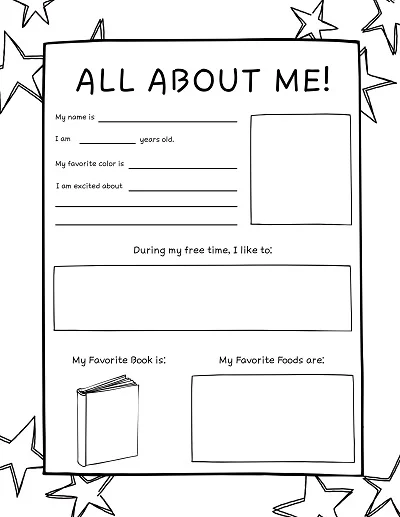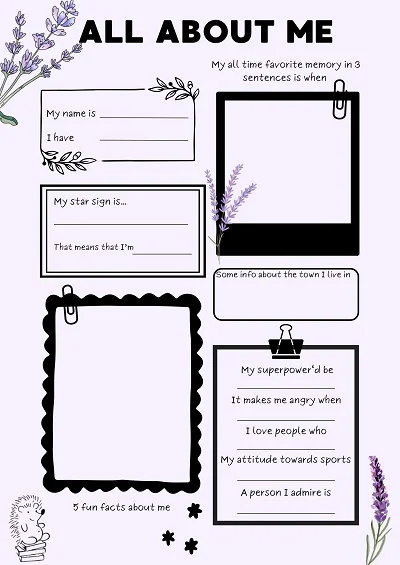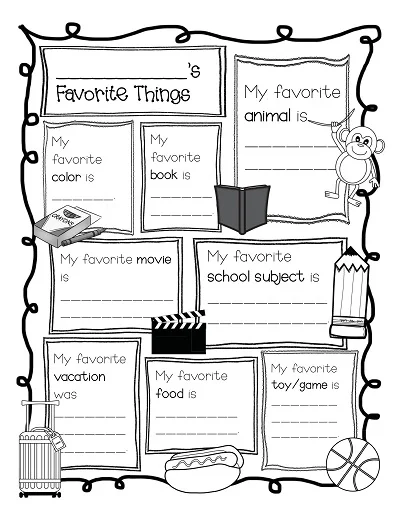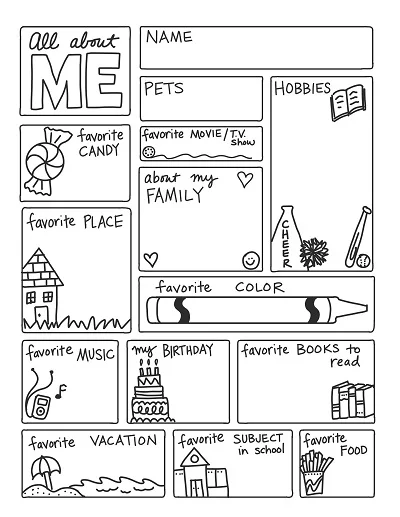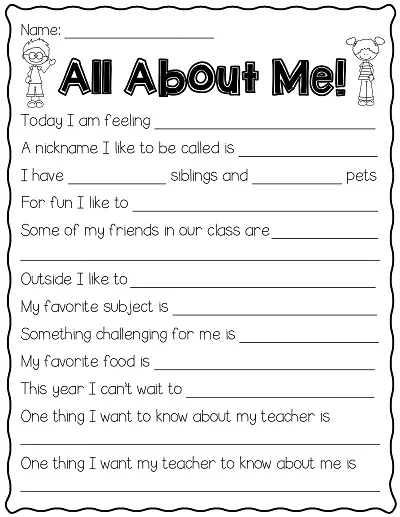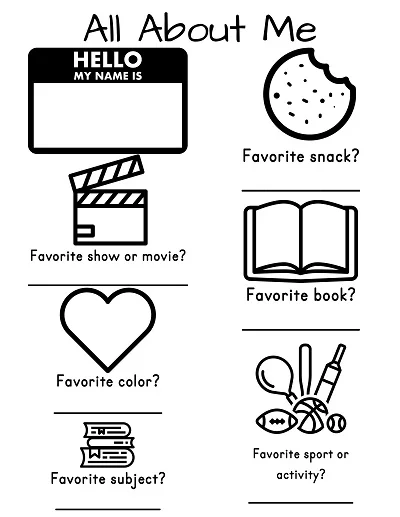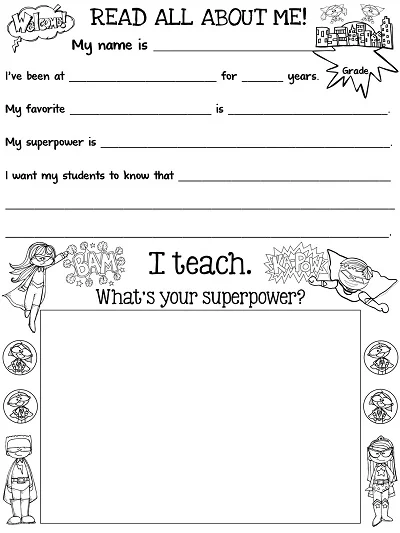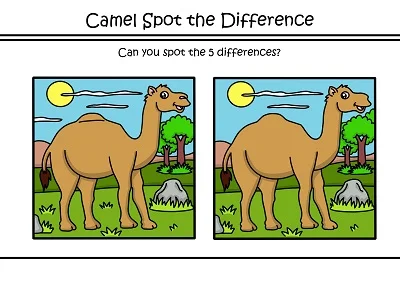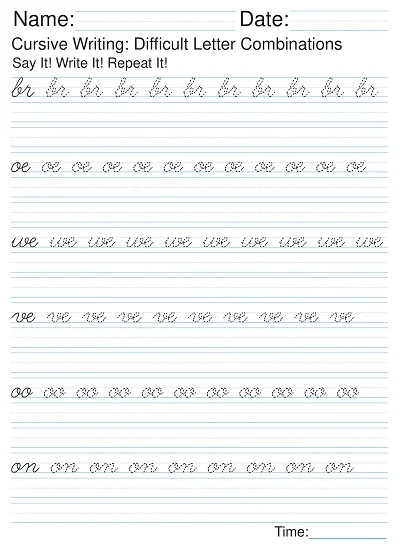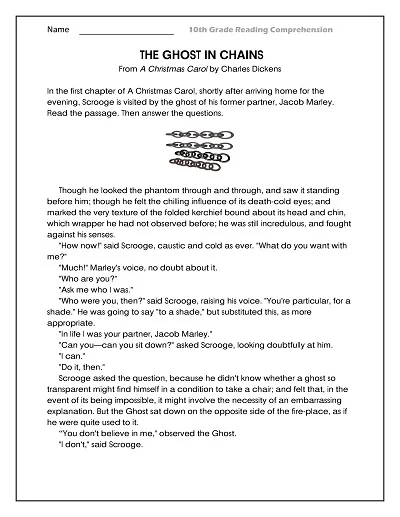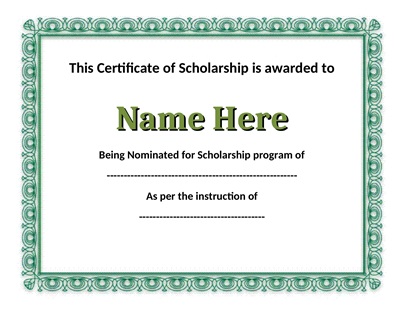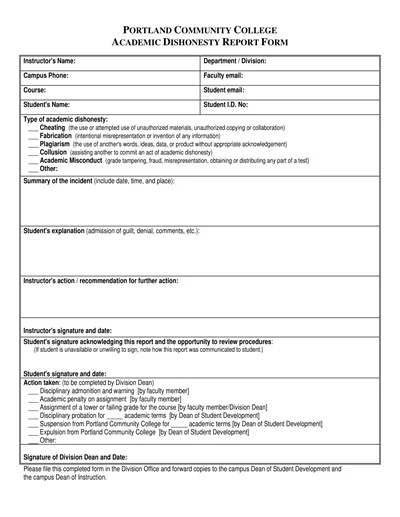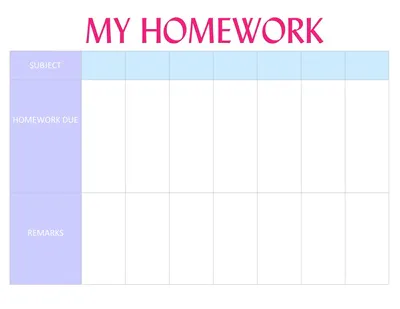All About Me Worksheet Template is a tool that is aimed at helping people, in particular children, to create templates with individual data in an inviting and engaging manner. We usually find prompts or sections where one can provide specific information about a person, such as name, age, relatives, likes and dislikes, hobbies, and goals in life.
This way, it can be entertaining and entertaining and is also a way for teachers, parents, and peers to learn more about a person and develop a better understanding in a group or class setting. These worksheets are common in the classroom at the beginning of the year or during collaborative work, targeting self-identity and empathy training.
Download Free Printable All About Me Worksheets
What is an All About Me Worksheet?
An All About Me Worksheet is a fill-in sheet where a person, especially a kid, fills in answers to questions that pertain to his/her interests, likes, and basic information, each on a separate line. It might contain questions and blank lines for answers on subjects such as favorite colors, foods, animals, or hobbies, and spaces for drawings or pasting pictures.
This tool is popular in learning environments at the start of the school year to create a sense of belonging, elicit student opinions, and meet other class members. Furthermore, it applies humor to make people think about their selves and personal preferences in an enjoyable and entertaining manner.
Components of the All About Me Worksheet
All About Me worksheet is a creativity tool that is aimed at helping people, especially kids, to share information about themselves in an informal and chaotic manner, as it may seem at first glance.
This worksheet typically includes several components, such as:
- Name and Age: The basic introduction that would be in the section is the name and age of the individual.
- Favorites: This part enables one to list favorite items like color, food, book, and hobby and gain some perception of one’s preferences.
- My Family: A section that contains family members allowing the assessment of the patient’s family environment.
- School and Friends: It comprises discussing school experiences and friends and emphasizing the social aspect.
- What I Want to Be When I Grow Up: It leads to thinking about the future and one’s career, contributing to the early development of goals.
- My Best Memory: Informing and reflection part, where a person can be encouraged to recall and narrate a favorite story from the past.
- Unique Qualities: This makes it possible for people to discover and appreciate one’s features that are different from others in order to develop self-acceptance.
This sort of worksheet is perhaps the most versatile as it lays out a structure and format for a person to express and share his/her opinions, likes and dislikes, and goals and plans for the future.
How to Use an All About Me Worksheet
“All About Me” is a helpful worksheet for those people who want to focus on their personalities, hobbies, preferences, and things they do not like. Fun and informative, this worksheet is ideal for learning settings such as at the start of the school term, for workers during training, or for self-assessment.
Here’s how to utilize an “All About Me” worksheet effectively:
1. Choose the Right Format
Choose the worksheet format that will be appropriate for the age of the child and the environment they are in. Children might appreciate a playful approach with many pictures on the templates, whereas teenagers or adults might need more free space for the text and their opinions.
2. Fill in the Basics
The initial set of questions should include simple questions such as the name, age, date of birth, and self-selected preferences such as a photo or drawing. This is useful after the greeting to briefly describe who you are.
Go to the part of the response where the respondent described preferred hobbies, types of food, kinds of music, movies, and other things. Be truthful and point-to-point; this is what sets you apart.
4. Reflect on Your Personality
Describe your personality traits. What kind of personality do you possess: extroverted or introverted? Creative or analytical? This kind of reflection can help promote people’s understanding of themselves.
5. Who and What You Have In Mind
Writing down your desires, dreams, and goals on the worksheet is important. Whatever career or personal development goal one has, writing it down on paper may be the first step to achieving it.
6. Add a Fun Fact
Finish off by giving an interesting or quirky detail about yourself. Adding this makes it personal, which will surely be a great conversation piece.
If so, feel free to discuss your worksheet with peers, friends, or relatives. This may serve as a good basis for promoting better relations between the two and for a better understanding of each other.
Benefits of Completing an All About Me Worksheet
There are several important advantages if the children are to fill in an All About Me worksheet, especially for young students. First of all, it can help people decide what they want or do not want, what they can do well, and what they would like to do in the future. This process of self-discovery is very important and needs to be followed to build self-esteem and confidence.
Further, in this method, children have avenues to share information and needs that prompt social interactions and the development of empathy among children. This will help teachers and caregivers to form strategies serving as educational content corresponding to each child’s preferences and knowledge assimilation type to improve the child’s outcomes. Finally, it would be useful for assessing developmental changes across different periods of development and provide the child and the adult with practical methods for observing the changes.
How to Fill Out an All About Me Worksheet
Using an “All About Me” worksheet is a good method of sharing information about you in an enjoyable manner. Here’s how to approach it:
- Start with the Basics:
- Name
- Age
- Birthday
- Place of birth
- Family and Pets:
- Name your relatives and state their relationship with you.
- Talk about your pets, their names, and the kind of animals they are.
- Favorites:
- Please let me know your favorite color, food, book, movie, and the activity you like to do most. Please add any other favorite foods you like.
- School and Future Ambitions:
- Ensure that the mathematics that you are going to learn is suitable for your current grade or job rank.
- Large sections should be devoted to what you wish to be or do in the future.
- Hobbies and Interests:
- List all your hobbies and the sports and activities you engage in or are interested in.
- If you are part of any club or group, you should remember to say so.
- Fun Facts:
- Share a few fun or unknown things about yourself that most people can’t find out easily.
- Goals and Dreams:
- Discuss a goal you are in the process of achieving and a dream you have for the future.
Remember, an “All About Me” worksheet acknowledges and shares something about you in person. Be honest and have fun appreciating the peculiarity that is you!
How to Create an All About Me Worksheet Template
To create an “All About Me” worksheet template, a number of procedures are followed in order to create a worksheet that could be used for self-expression and self-identity.
Here’s a comprehensive guide to walk you through the creation process:
1. Select Your Design Platform
First, select a design application that you feel comfortable working with, and that will provide the necessary tools to create an appealing worksheet. This could start from simple writing applications such as Word or Google Docs to GUI designing-type tools such as Adobe InDesign.
2. Design the Layout
Avoid cluttering the page with additional elements such as navigation and headers since such an environment is intended to support individual contemplation. Make sure that your margins are no lower than 0. 5 inches for the purpose of handling and possibly inserting it into a binder with some space left over.
3. Crafting the Title Section
When compiling the material, put an easily recognizable title like “All You Need to Know About Me” at the top of the document with an interesting and clear script. Next to the title, provide a box where people want to write their names, so it is undoubtedly individual, at least at the beginning.
4. Incorporate Personal Information Sections
- Basic Information: Insert additional fields to include “Name,” “Age,” “Date of Birth,” and “Grade/Class. ”
- Favorites: Design a list for people to write their preferences, enabling them to record their favorite colors, food, books, movies, etc. This makes the process easier for sharing one’s preferences with others.
5. Add Interactive Elements
- ‘This or That’ Choices: For instance, a “This or That” column that incorporates options such as “Cats or Dogs?” or “Day or Night?” involves circling the right answer.
- Illustration Area: Devote a segment of the worksheet for art, and be suggestive with phrases like ‘Your Family – Draw Me,’ ‘Things That Make You Happy – Draw It. ’
6. Open-Ended Question Section
It is better to include a few questions with no definite answers, for example, goals for later years and moments in life that people are grateful for. Leave enough space on the line for detailed answers.
7. Design Considerations
Select an appropriate font (at least 11 required) and use narrowly attractive and meaningful color combinations that should not influence the targeted age group of the worksheet.
8. Review and Refine
Make sure to review all the necessary inputs outlined in the worksheet to ensure that there are no mistakes in the instructions and the questions provided. It is more helpful to apply the worksheet to a small audience to obtain feedback for any changes needed.
9. Finalize and Distribute
When the design is done, and all the modifications have been made according to their advice, save the worksheet in a format accessible to everybody, for example, PDF, and it becomes ready for dissemination with your audience.

